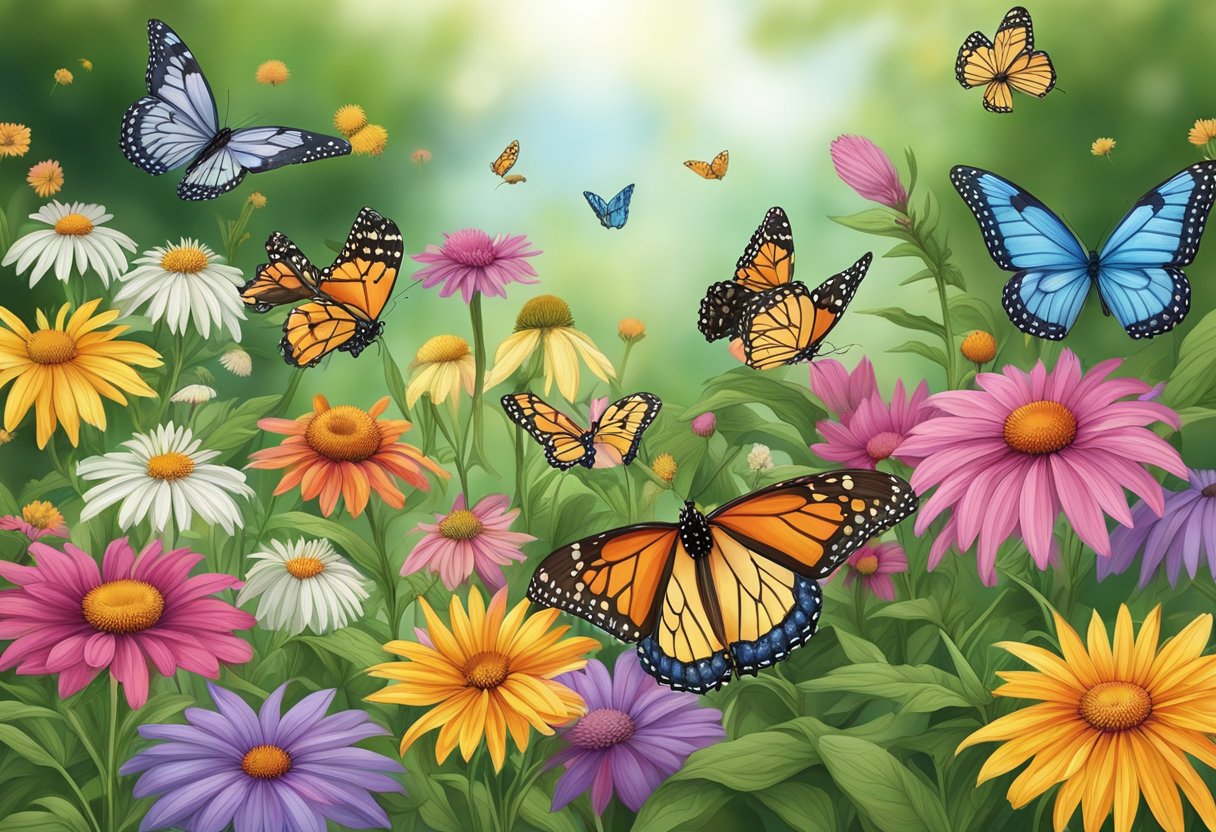Creating a garden that attracts butterflies involves choosing plants that serve the needs of these delicate creatures at all stages of their life cycle. I prioritize perennials that not only provide nectar but also serve as host plants for their larvae. This dual purpose ensures that butterflies will visit my garden not just for feeding but also for laying their eggs, which will hatch into caterpillars that feed on the host plants. A healthy butterfly garden supports the complete life cycle of these insects.

Planting a variety of nectar-rich perennials like coreopsis draws smaller butterflies such as skippers and whites, and vibrant lantana attracts a diverse range of pollinators. Including plants like milkweed is crucial, as it is the only host plant for the Monarch butterfly, making it an indispensable part of my butterfly garden. I also incorporate plants that bloom at different times and offer an array of flower shapes and colors to provide a continuous source of attraction throughout the seasons.
JUMP TO TOPIC
Choosing the Right Flowers for Butterflies
Creating a butterfly garden begins with selecting the right perennials. My focus will be on varieties that offer rich sources of nectar and vibrant hues, which are crucial for attracting these pollinators.
The Importance of Nectar-Rich Plants
Butterflies require nectar for energy. So, the cornerstone of my butterfly garden includes plants like coneflowers (Echinacea spp.), lavender (Lavandula spp.), and salvia (Salvia spp.). These not only provide ample nectar but also bloom at different times, ensuring continuous food supply.
Selecting Colorful Varieties
A colorful garden is a magnet for butterflies. I aim for a palette of bright pinks, purples, and whites with plants such as phlox paniculata, bee balm (Monarda didyma), and asters which stand out against the greenery, creating visual hotspots.
Focusing on Native Perennials
Native plants tend to be more resilient and supportive of local wildlife. I include New England aster (Symphyotrichum novae-angliae), black-eyed Susan (Rudbeckia hirta), and native milkweed species like asclepias tuberosa, as these are well-suited to my local environment and benefit the entire butterfly life cycle.
Attracting Specific Butterfly Species
In my experience, attracting specific butterfly species requires an understanding of their life cycles and feeding preferences. Here’s how to create a garden that caters to the needs of various butterfly types at different stages of their development.
Catering to Caterpillars and Larvae
Butterflies require specific host plants to lay their eggs. As an example, milkweeds (Asclepias spp.) are vital for monarch caterpillars as they serve as a food source and larval host. Planting native violets will attract fritillaries, as their caterpillars exclusively feed on the foliage.
Welcoming Swallowtails and Monarchs
💥 Adult Swallowtails and Monarchs favor nectar-rich flowers.
For Swallowtails, planting herbs like fennel and parsley can provide food for their larvae. **Butterfly bushes** and **Joe Pye weeds (Eutrochium spp.)** are excellent at attracting adult Monarchs, which are drawn to their bushy, flower-laden structure.
Targeting Skippers and Fritillaries
I also make sure to include specific plants for Silver-spotted Skippers and Fritillaries. Skippers are drawn to plants like Black-eyed Susans and Joe Pye weed, while Fritillaries prefer violet flowers. Both these butterflies and their caterpillars benefit from these nectar and host plants strategically placed within the garden.
Creating a Sustainable Butterfly Habitat
Establishing a butterfly habitat in your garden means considering the life cycle of butterflies and creating an environment that supports each stage. This includes not only what the adult butterflies need, but also what the caterpillars require.
Incorporating Host Plants for Butterfly Larvae
- Milkweed (Asclepias spp.) for Monarch caterpillars
- Parsley, Dill, and Fennel for Black Swallowtail caterpillars
- Passionflower vines (Passiflora spp.) for Gulf Fritillary caterpillars
- Willow and Cherry Trees for Tiger Swallowtail caterpillars
Designing a Garden with Continuous Bloom
To maintain a steady source of nectar throughout the seasons, I plant a succession of blooms, starting with spring flowers like pansies and lilacs, transitioning to summer bloomers such as echinacea and butterfly bush (Buddleia), and finishing with autumn heroes like goldenrod and asters. This ensures that butterflies have a constant nectar source to fuel them from spring to fall.











